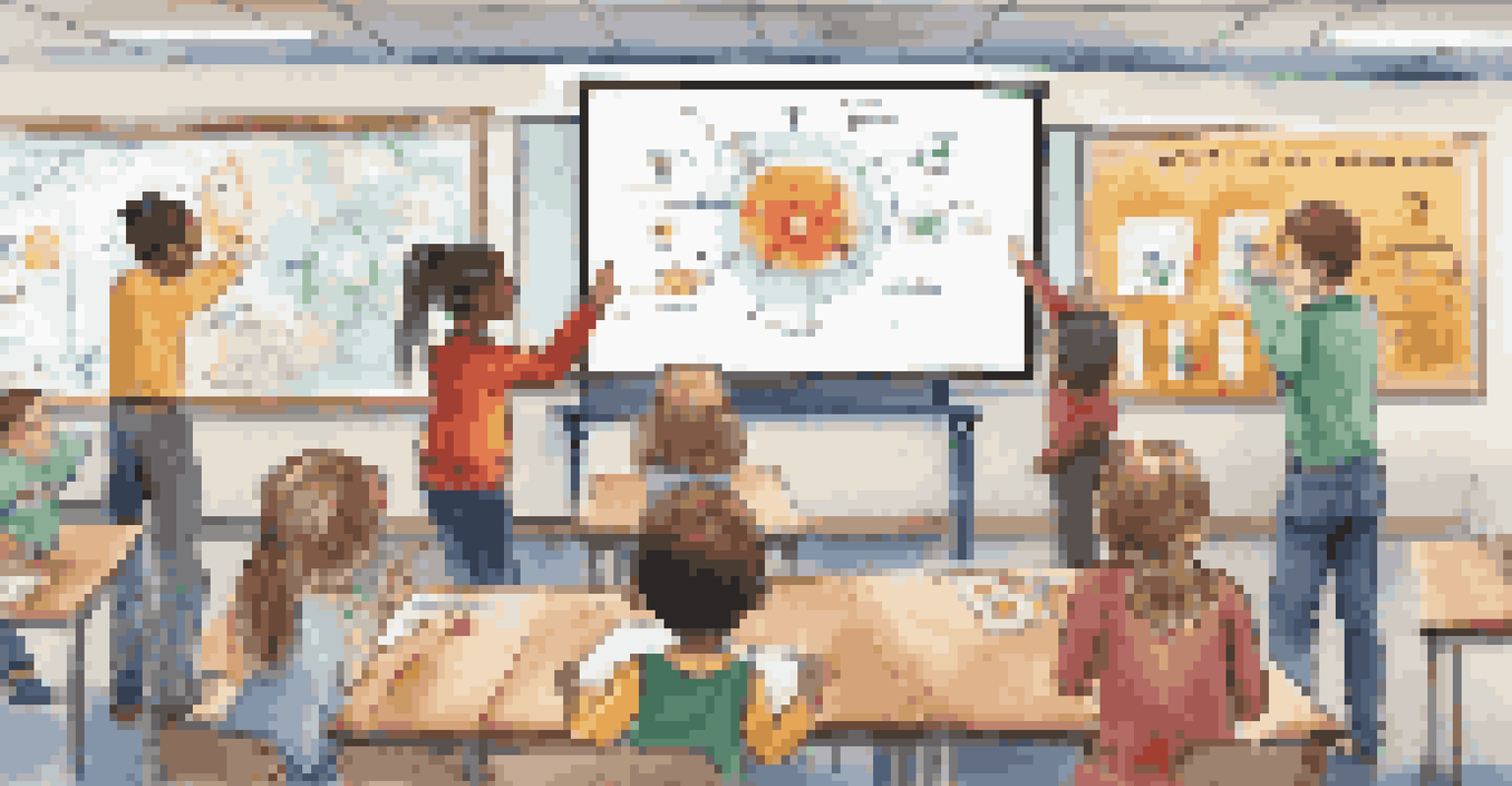The Future of Education: Embracing Play for Learning Success

Understanding the Concept of Play in Education
Play is often viewed as merely a leisure activity, but in educational contexts, it takes on a transformative role. It encourages creativity, problem-solving, and collaboration among students, making learning a dynamic experience. When students engage in play, they often absorb information more effectively than through traditional methods.
Play is the highest form of research.
Educational theorists like Jean Piaget and Lev Vygotsky have long emphasized the importance of play in cognitive development. They believed that play is not just fun; it’s a crucial part of how children learn about the world around them. By integrating play, educators can foster a rich learning environment that promotes critical thinking skills.
As we look to the future, understanding how play can complement traditional learning strategies will be key. Schools are beginning to embrace this shift, creating curricula that balance structured learning with opportunities for playful exploration. This approach not only engages students but also prepares them for real-world challenges.
Benefits of Integrating Play in Learning Environments
Integrating play into education provides numerous benefits, particularly in enhancing student engagement. Students who learn through play are often more motivated, as they find joy in the learning process. This heightened engagement can lead to improved retention of information and better academic performance.

Moreover, play encourages social skills and emotional intelligence. When students work together in play-based activities, they learn to communicate, negotiate, and resolve conflicts. These are essential skills that will serve them well beyond the classroom, in both personal and professional settings.
Play Enhances Learning Engagement
Integrating play into education fosters motivation and improves retention of information among students.
Additionally, play fosters a sense of belonging among students. When they participate in collaborative play, they feel more connected to their peers and their learning environment. This sense of community can significantly enhance their overall educational experience, leading to a more positive attitude toward learning.
Examples of Play-Based Learning in Action
One striking example of play-based learning can be seen in Montessori schools, where students are encouraged to explore and interact with their environment. In these settings, children choose activities that interest them, promoting self-directed learning. This method has shown to enhance motivation and foster a love for learning.
Children learn as they play. Most importantly, in play, children learn how to learn.
Another inspiring example is the use of gamification in the classroom. By incorporating game elements into lessons—such as point systems, challenges, and rewards—teachers can make learning fun and competitive. This approach not only engages students but also encourages them to take ownership of their learning process.
Lastly, outdoor and nature-based education programs emphasize play by allowing students to learn through exploration and interaction with their surroundings. These programs have been linked to improved academic outcomes as well as enhanced physical and mental well-being. Such real-world applications of play-based learning demonstrate its effectiveness in various educational settings.
Challenges in Implementing Play-Based Learning
While the benefits of play-based learning are clear, implementing it can present challenges. One significant hurdle is the existing educational framework, which often prioritizes standardized testing and structured curricula. This can leave little room for the flexibility that play-based methods require.
Teachers may also feel unprepared to embrace play as a legitimate learning strategy. Professional development opportunities focused on play can be limited, making it difficult for educators to confidently integrate these practices into their classrooms. Addressing this gap is essential for the successful adoption of play in education.
Play Develops Essential Skills
Play-based learning cultivates social skills and emotional intelligence, preparing students for future personal and professional interactions.
Additionally, there can be resistance from parents and administrators who may not fully understand the value of play in learning. It’s crucial to communicate the research and success stories surrounding play-based education to garner support. Overcoming these challenges will be pivotal in paving the way for a more playful and effective educational system.
The Role of Technology in Play-Based Learning
Technology can play a significant role in enhancing play-based learning experiences. Educational apps and games that are designed with pedagogical principles in mind can provide interactive and immersive learning opportunities. These digital tools can capture students' attention and motivate them to engage with the material in new ways.
Moreover, technology allows for personalized learning experiences. Adaptive learning platforms can adjust to a student's pace, providing challenges that match their skill level. This customization can make learning feel more playful and less intimidating, encouraging students to explore concepts more deeply.
However, it’s important to strike a balance between digital play and physical play. While technology can enhance learning, it shouldn’t replace the benefits of hands-on experiences. Combining both elements can create a holistic approach to education that prepares students for a rapidly changing world.
Creating a Play-Friendly Learning Environment
To embrace play in education, schools need to create environments that encourage exploration and creativity. Classrooms should be designed with flexible seating arrangements and access to a variety of materials that invite hands-on learning. Spaces that are conducive to play can ignite students’ imaginations and foster collaborative learning.
In addition, teachers should be trained to recognize the value of play and to facilitate it effectively. Professional development programs can empower educators to integrate play into their teaching practices confidently. By equipping teachers with the right tools and mindset, schools can cultivate a culture that values play as a vital component of learning.
Creating Play-Friendly Environments
To support play in education, schools must design flexible spaces and provide training for teachers to facilitate effective play-based learning.
Finally, involving parents and the community can enhance the play-friendly atmosphere. Workshops and events that showcase the importance of play in learning can build understanding and support. This collective effort can transform educational spaces into vibrant hubs of engagement and discovery.
Future Trends in Play-Based Education
As the educational landscape evolves, we can expect to see more schools adopting play-based methods. The growing recognition of the importance of social-emotional learning is driving this shift. Educators are realizing that fostering a love for learning and developing soft skills is just as critical as academic achievement.
Additionally, the integration of mindfulness and well-being into education is becoming increasingly prevalent. Play-based learning naturally aligns with these trends, as it promotes relaxation, creativity, and joy. Schools that prioritize mental and emotional health alongside academics are likely to see their students thrive.

In the years to come, we may also witness a rise in hybrid learning models that blend traditional and play-based approaches. This flexible framework could cater to diverse learning styles and preferences, creating more inclusive educational experiences. The future of education is bright, and play will undoubtedly play a central role in shaping it.